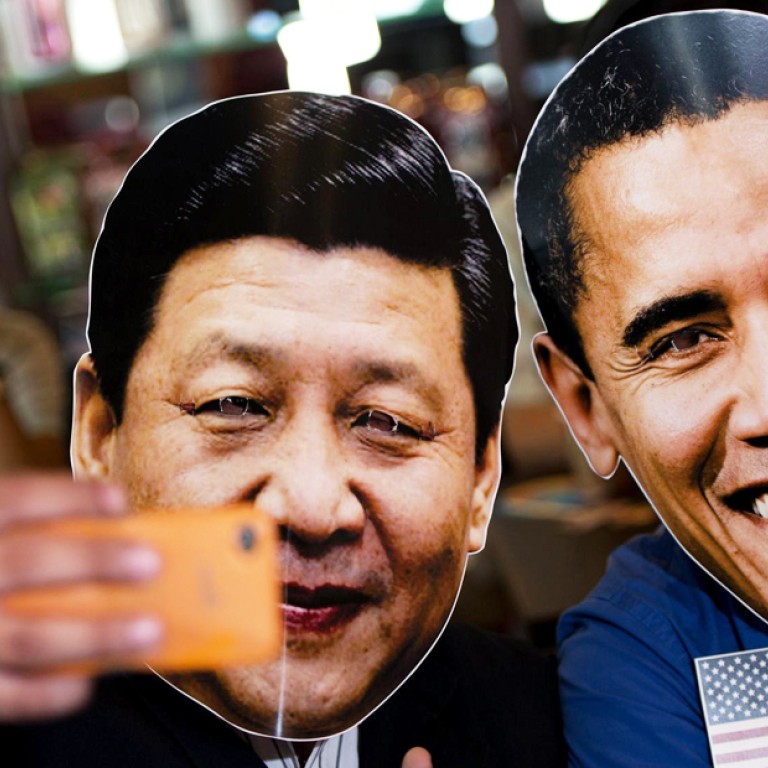
Barack Obama will be careful not to rile Beijing in reassuring the Philippines of US military support
US president will be careful not to rile Beijing in reassuring the Philippines of military support
When President Barack Obama arrives today in Manila, he'll seek to reassure Filipinos that the US would stand behind them in any confrontation with China, without doing so in a way that aggravates Beijing.
It will be a delicate dance.
Beijing is the United States' second-largest trading partner, and it has territorial ambitions off its coasts that will be difficult for Washington and its Asian allies to contain fully.
Yet the Philippines isn't just one of those allies.
It is a former US colony and has been a strategic asset for the US military since the Spanish-American War at the end of the 19th century. An estimated 3.4 million Filipino-Americans live in the United States.
That's why Obama's two-day visit to the Philippines - his first and the first by a US president since 2003 - will be watched closely on all sides of the Pacific.
"Obama's trip is quite significant because of the current tensions over the South China Sea," said Patricio Abinales, a Philippines specialist at the University of Hawaii in Honolulu. "The Philippines needs this visit if only as a symbolic act of support from an ally."
Obama travelled on Saturday from South Korea to Malaysia, where he became the first US president to visit since Lyndon Johnson in 1966. Unlike the Philippines, Malaysia has a close and long-standing relationship with Beijing, although it has been strained by Malaysia's much-maligned investigation into the missing Malaysian airliner with 239 people aboard, two-thirds of whom were Chinese.
In the Philippines, Obama will find a nation where US relations have steadily improved since the early 1990s, when the US closed the Subic Bay naval base, its last military installation in the Philippines. That closure was prompted by the eruption in 1991 of the Mount Pinatubo volcano, which covered the base with ash, and the Philippine Senate's refusal to approve a treaty that would have extended the US lease at Subic.
Just a few hours before Obama meets Philippine President Benigno Aquino today in Manila, a long-negotiated security agreement will be signed allowing American forces an increased military presence in the Philippines.
The Enhanced Defence Co-operation agreement would run for 10 years, two senior government officials said yesterday. But the deal would renewable depending on the needs of the two oldest allies in the Asia-Pacific region, one of the sources said.
The US was expected to gradually deploy combat ships, a squadron of F18s or F16s and maritime surveillance aircraft, the same source said.
Last year, there were 149 US navy ship visits to the Philippines, up from 68 in the previous year, and that number is likely to rise further under the new pact.
The potential remilitarisation of the Philippines is largely a response to Beijing's growing naval might and the claims it has made on roughly 90 per cent of the South China Sea, which potentially harbours vast deposits of oil and natural gas.
The Philippines has filed a case against Beijing over the South China Sea at an arbitration tribunal in The Hague.
Beijing condemned the action and is unlikely to comply with the tribunal's ruling even if it goes against it.
In a briefing before Obama's four-nation Asian visit, administration officials rejected suggestions that the president was seeking to contain Beijing. "The US has a US$500 billion bilateral trading relationship with China. How could that possibly be containment?" said Evan Medeiros, special assistant to the president and senior director for Asian affairs. Yet Ben Rhodes, a deputy national security adviser, acknowledged that a major goal of Obama's visit was to "reaffirm the US commitment to the security of the Philippines".
US investments in infrastructure, schools and disaster aid are one reason the United States is seen as a friend to the Philippines, where 20 per cent of its people live in poverty.
Filipinos recovering from November's Typhoon Haiyan, which killed more than 6,200 people and displaced 4.1 million others, have also received US assistance. According to a report by the Congressional Research Service, the US by February had spent US$87 million helping communities in the Philippines recover from that typhoon.
By contrast, Beijing had donated only US$1.8 million.
